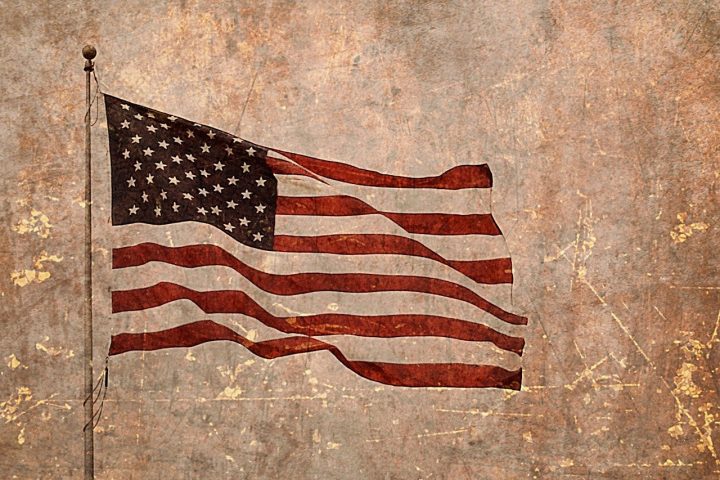George Orwell famously wrote, “All animals are equal, but some animals are more equal than others.” So it is with America’s voters. The outcome of today’s election is in the hands of those voters lucky enough to live in a battleground state.
But even these voters are not equal. A few of the battleground states are crucial, others less so. So which battleground states are which? And when, due to the unprecedented level of mail-in balloting, can we expect to know their outcomes?
At the top of the list are Florida, Wisconsin and Pennsylvania. Florida alone could be the tip-off to the identity of the next president. It’s been on the winning side in 13 of the last 14 presidential elections, losing out only in the 1992 Bill Clinton-George H. W. Bush race. President Donald Trump won Florida by a mere 1 percentage point in 2016. Given that he’s behind by a larger margin in national polls this time, Trump likely has to win Florida again to have a chance of victory. Florida’s outcome could be known tonight or by early tomorrow morning. Unlike some states, Florida allows the counting of mail-in ballots to start before Election Day, and such ballots must be received by Election Day to be counted.
Wisconsin is another battleground state that’s more equal than others. If Democratic nominee Joe Biden were to carry Wisconsin, which Trump won by less than 23,000 votes in 2016, he likely will carry the neighboring battleground states of Michigan and Minnesota. They split in 2016, with Hillary Clinton winning narrowly in Minnesota, Trump narrowly in Michigan. But, compared with Wisconsin’s voters, the voters in these two states lean more Democratic. Wisconsin is probably a must-win for Trump, but we might not know its outcome until late next week. Because of a Supreme Court ruling last week, only mail-in ballots received by Election Day will be counted in Wisconsin. Yet, its counting can’t start until Election Day and the state is not equipped to quickly tabulate large numbers of mail-in votes.
Pennsylvania has been a toss-up state in nearly every presidential election since 1976. Trump won by fewer than 50,000 votes in 2016 — this in a state where more than 6 million ballots were cast. Pennsylvania is nearly a must-win state for Biden and he’s in a stronger position there than Clinton was in 2016. Like Wisconsin, it might be late next week before we know the outcome in Pennsylvania. It has a high rate of mail-in balloting, and the count of these ballots can’t begin until Election Day. If the race in Pennsylvania is tight, a legal fight is certain. The Supreme Court declined to make a final decision on a ruling of Pennsylvania’s high court that the state could count ballots postmarked by Nov. 3 and received three days later. The late arriving ballots, for the moment, will be counted separately.
Arizona and North Carolina are in my next tier of important battleground states. Arizona is a new entry into the key battleground-state category. Once safely Republican, it has been trending Democratic due to its increasing Latino population. Unless it’s very close, Arizona’s outcome should be known early. Its mail-in votes can be counted as they arrive. If Trump were to lose Arizona, he likely would have to outperform expectations in the Rust Belt to pull off an Electoral College victory.
For its part, North Carolina is another state that Trump likely needs to win. It has gone Republican in four of the last five elections — the exception was 2008, when Barack Obama narrowly edged John McCain. Like Florida, North Carolina could provide an early indicator of the next president. It allows the counting of mail-in ballots to start in advance of Election Day.
In the lowest tier of this year’s battleground states are Colorado, Georgia, Iowa, Nevada, New Hampshire, Ohio and Texas. They’re what I would call the “gravy” category. If a combination of these states votes contrary to its recent history, we’re looking at either a lopsided Biden win or, if Trump wins, the greatest election comeback since Harry S. Truman beat Thomas Dewey in 1948. Each of these states allows the count of absentee and mail-in ballots to start before Election Day.
As for the 36 states not in this election’s battleground category, there should not be much suspense aside from the speed with which their ballots are counted. There could be a shocking outcome in one or two of these states but it appears unlikely at this point. If the electoral votes of the 36 non-battleground states (and the District of Columbia, which has three electoral votes) are allocated based on current polls, Trump has 130 votes locked up and Biden has 202. A total of 270 electoral votes are needed for victory.
What’s the likelihood that 2020 will repeat 2016, when the national popular vote winner lost the presidency due to the Electoral College? If the most recent national polls are accurate, the odds are relatively high that Trump will be a one-term president. The larger the national popular vote margin, the less likely that the weaker candidate will have a path to an electoral vote victory.
Thomas E. Patterson is Bradlee Professor of Government & the Press at Harvard’s Kennedy School and author of the recently published Is the Republican Party Destroying Itself? Journalist’s Resource plans to post a new installment of his Election Beat 2020 series every week leading up to the 2020 U.S. election. Patterson can be contacted at thomas_patterson@harvard.edu.
Further reading:
“Biden is Favored to Win the Election,” FiveThirtyEight, Nov. 2, 2020.
Robert S. Erikson, Karl Sigman and Linan Yao. “Electoral College Bias and the 2020 Presidential Election,” PNAS, Oct. 26, 2020.
Alexander Keyssar. Why Do We Still Have the Electoral College?, Harvard University Press, 2020.
Michael McQuarrie. “The Revolt of the Rust Belt: Place and Politics in the Age of Anger,” British Journal of Sociology, 2017.


Expert Commentary